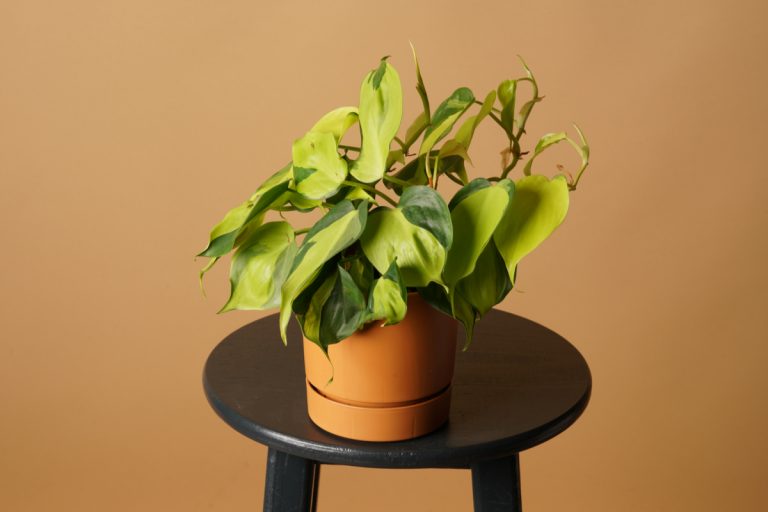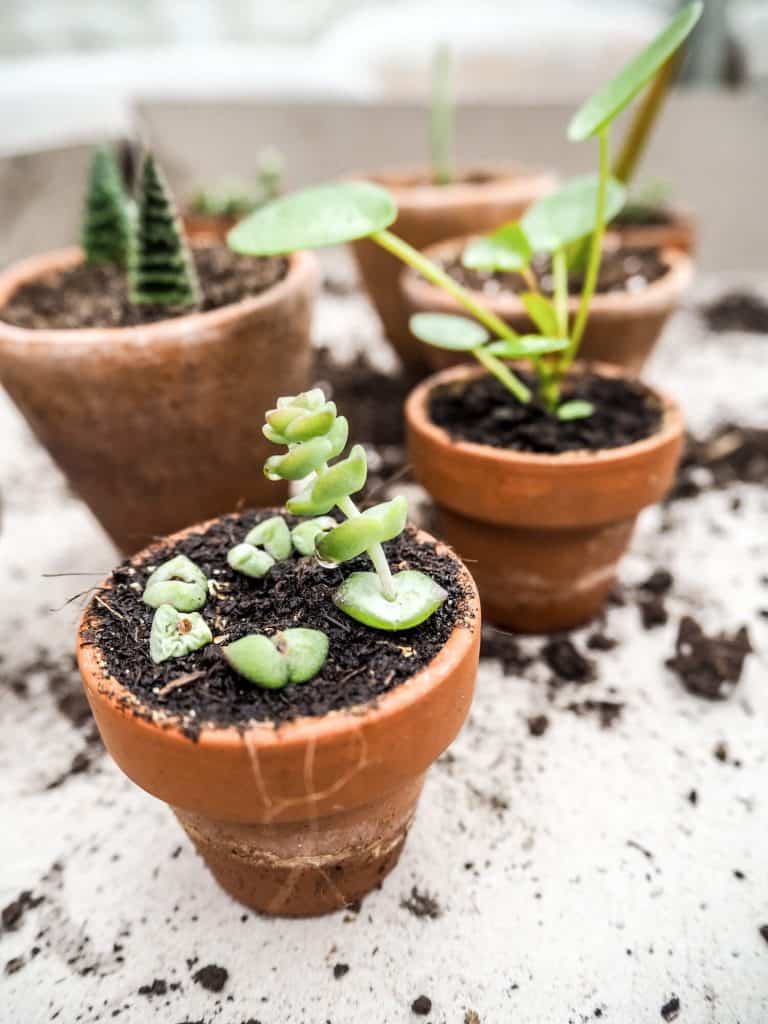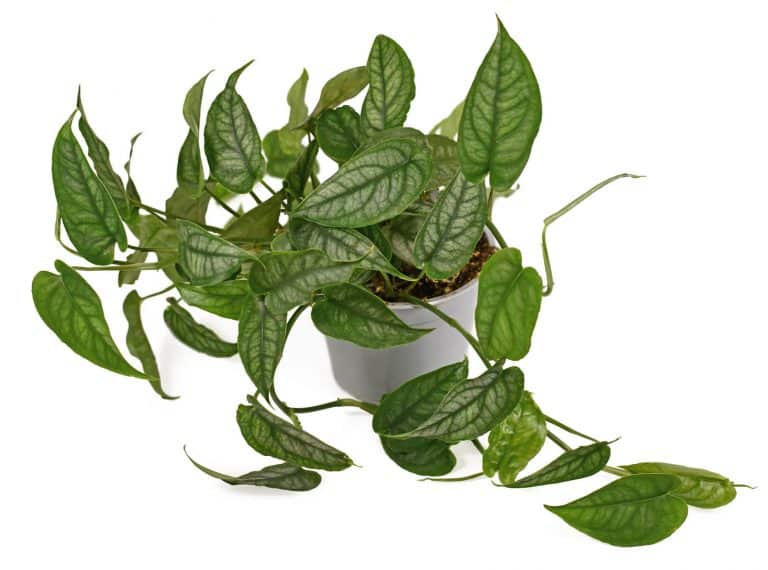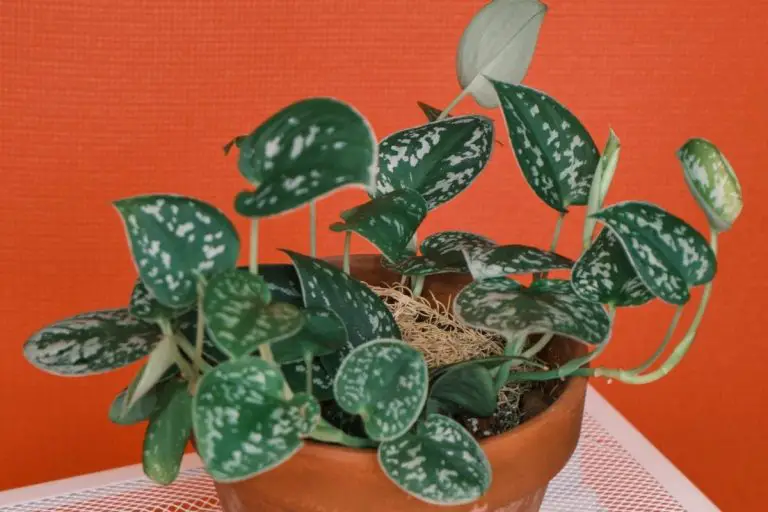How To Grow Tomatoes Indoors With Lights + Growing Tips! [2023]
Looking for how to grow tomatoes indoors with lights?
Well, this article covers all you need to know on how to use grow lights for tomatoes from listing the best grow light for tomatoes to answering questions like whether tomatoes ripen under grow lights.
When it comes to growing tomatoes indoors with lights, it may seem tedious when you can simply grow them outdoors.
However, when you grow your tomatoes indoors, you are in control of the outcome of your plant!
You get to be the puppet master and control factors like temperature and light, unlike tomatoes that are left outdoors, subject to the rough hot summer or nasty cold winters.
Are you ready to yield some of the best tomatoes? Let’s get straight to it!
How To Grow Tomatoes Indoors With Lights
Step 1: Select The Tomato Variety To Be Planted
Step 2: Choosing The Right Soil
Step 3: Planting The Seeds
Step 4: Choosing The Right Grow Light
Step 5: Fertilizing And Watering The Plants
Step 6: Pollinating The Tomato Plant
Step 7: Pruning
Step 8: Harvesting

Disclosure – Some of the links here are affiliate links, and I may earn if you click on them, AT NO EXTRA cost. I hope you find the information here useful! Thanks!
Related Posts
- How To Grow Tomatoes Indoors Like A Pro! 2022
- How To Grow Tomatoes In A Polytunnel
- Best Light For Vegetative Growth
- Can You Grow Tomatoes In A Grow Tent? + Tips For Quick Growth [2022]
- Tomato Plants Over Winter: How To Help Them THRIVE! [2023]
How To Grow Tomatoes Indoors With Lights
Step 1: Select The Tomato Variety To Be Planted
One of the most crucial steps in growing tomatoes indoors with lights is selecting the kind of tomato you would like to grow.
It could be challenging to decide which variety to choose for your particular indoor setting because there are so many different ones available.
When it comes to tomatoes, they fall under two categories:
- Determinate variety
- Indeterminate variety
Determinate Variety

Determined tomatoes are the kinds that reach a specific size at maturity and develop all of their fruit quickly.
After the very first flush of fruit ripens, the plant’s health starts to wane and it produces little to no fresh fruit.
Since determinate tomato types do not keep growing longer throughout the growing season, they are frequently referred to as bush tomatoes.
The majority of them only reach a compact height of 4 to 5 feet, making them normally smaller plants than indeterminate tomatoes.
Examples of determinate tomatoes are:
- Campbell 33
- Dwarf Purple Heart
- Gold Nugget Cherry
- Black Sea Man
- Speckled Siberian
Indeterminate Variety
Indeterminate tomatoes will continue to grow, blossom, and bear fruit throughout the planting season. Indeterminate tomatoes have a long growing season, so they can get rather big and tall.
Despite the fact that six feet are more common, plants can grow up to 12 feet tall.
They also need very solid caging or staking because of their size throughout the season. Some indeterminate types’ growth patterns are so strong that regular tomato cages are frequently insufficient.
Examples of indeterminate tomatoes are:
- Beefsteak
- Big Boy
- Brandywine
- Sungold
- Sweet Million
Step 2: Choosing The Right Soil

The ideal soil for growing tomatoes inside is one that drains well, is not overly dense, and also contains vital nutrients.
To promote proper drainage, if at all possible, use potting soil that contains some perlite.
Here are some suggestions:
Step 3: Planting The Seeds
Insert your potting mix into a grow disc or a cell tray. Place one seed in each cell after that and bury them a quarter inch deep.
After that, sprinkle your seed with water and cover your tray with a cover to retain moisture while the seeds begin to germinate.
After sowing, germination can take a couple of weeks.
Your seed tray should be at a temperature of 62 to 65 degrees Fahrenheit for this step.
Once more, if you’re growing them in a cooler indoor environment, think about adding a heat mat.
Step 4: Choosing The Right Grow Light
It is ideal to use a light that contains both warm and cool-colored bulbs while growing tomatoes. Your plants will be encouraged to grow healthy tomatoes and start bearing fruit by the warm-colored lights.
These are the common types of lights used to grow tomatoes.
1. Fluorescent Lamps
Fluorescent grow lights are typically less expensive to buy. However, because most fluorescent lamps do not provide full-spectrum light, you will probably see fewer gardeners planting their tomatoes with them.
2. High-Intensity Discharge Lamps
Plants grow swiftly and effectively under HID lights. They are superior to other kinds of lamps in terms of brightness, making them perfect for a commercial growth operation.
3. LED
Growing tomatoes indoors with led lights will be the ideal choice. When choosing the LED light, go for the option that is full-spectrum because they require the least amount of power.
They do not emit heated surface temperatures like other kinds of lights making them the safer option.
Since they are totally integrated, there is no need to buy and replace additional bulbs and you may leave them on all the time.
Step 5: Fertilizing And Watering The Plants

Tomatoes prefer to be fertilized frequently and in tiny, regular amounts. A weekly fertilizer feeding is a great place to begin.
The amount of fertilizer needed depends on a number of things:
- If your plants are generating more leaves and fewer fruits, you may be adding too much fertilizer to your tomato plant
- On the contrary, if your plant is not producing as much fruit, you can add some eco friendly fertilizer
Here are some sources to read on fertilizers:
- Fertilizing Tomatoes: Tips For Using Tomato Plant Fertilizer
- Best Fertilizer For Tomatoes At Different Stages
As for watering your plant, a helpful tip for tomato plants kept indoors is to bury your right index finger in the potting mix to check for water content.
Water your plant if your upper knuckle is dry.
Aim to continuously keep your pot damp but not saturated. Tomato splitting (this happens when the moisture level of the soil fluctuates rapidly causing the fruit to expand faster than the skin can grow) can be caused by too much or too little irrigation.
Step 6: Pollinating The Tomato Plant
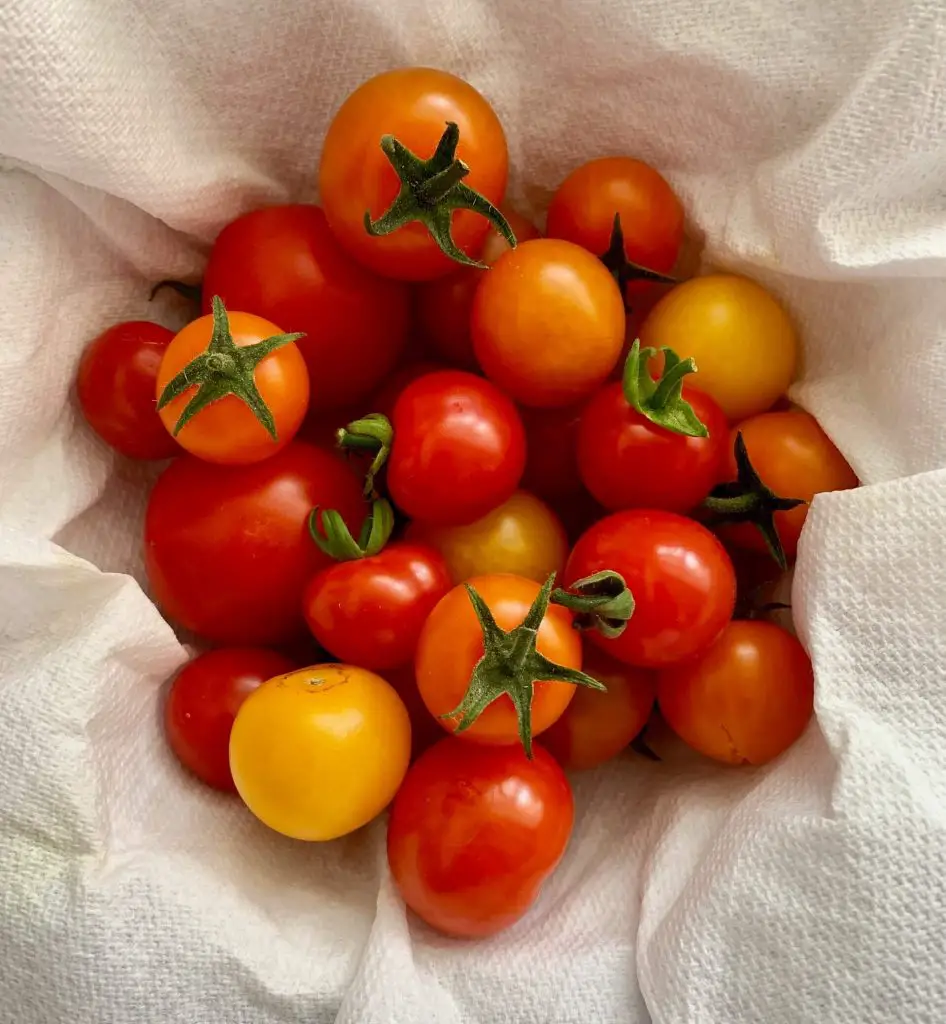
Pollination is the spreading of pollen to enable fertilization on a plant.
The way tomato plants works is that they self-pollinate. To increase your yields, you must help pollination, particularly when growing inside.
There are two options for doing this:
- Each blossom can be cleaned using a cotton swab, or a paintbrush
- You may just tap or gently shake the stems every day
Step 7: Pruning
To concentrate energy on your leaves so they can produce fruit, trim your tomato plants.
The airflow will also be improved by pruning and eliminating suckers, which are new sprouts.
When working with indeterminate types, pruning is vital.
Step 8: Harvesting
When it comes to picking your tomato plants, practice patience.
Pick them when they appear ripe and feel soft because it takes an indoor plant 50 to 60 days to flourish until it can yield fruit.
Some tomato types’ stems may need to be cut with a knife if you’re picking them from above.
Just be careful not to damage any leaves as this could prevent your plants from producing more tomatoes in the future.
FAQ
Can Tomatoes Be Grown Indoors With A Grow Light?

Yes! Even when it is chilly outside, you may start your seeds and grow tomatoes indoors with the help of tomato grow lights.
Grow lights simulate sunshine from an electrical standpoint. For optimal growth, plants require both shade and light.
Whenever selecting a tomato to grow a light system, take into account these two aspects:
- What kind of lamp is ideal for the plants you want to grow?
The sort of tomato grow lights you choose depends on the style of indoor gardening you wish to conduct.
- What kind of stand structure is most appropriate for your circumstances?
Choose the space you wish to provide your tomato grow light system.
To determine the grow light stand or structure that would perform best for you, evaluate and measure your designated growth space.
View the various grow light options available.
To know the type of lamp you need for your tomatoes, you must understand the impact of color temperature on your tomatoes.
Different grow lamps will emit lights and the light spectrum is measured in degrees Kelvin (K), which represents a visual temperature.
When a grow light produces light with a blue tint, it means that the temperature of the light emitted is around 5000K – 6500K, supporting all phases of plant development.
Now, as the plant produces fruit, grow lights with lower color temperatures of 2500K – 3000K are frequently chosen by gardeners since they are known to promote flowering.
This kind of grow light emit a glow that can be with a red undertone or even yellow.
So, higher temperature grow lights at the beginning stage of a plant’s growth and a lower temperature light once it starts flowering.
Can Tomatoes Grow In Artificial Light?
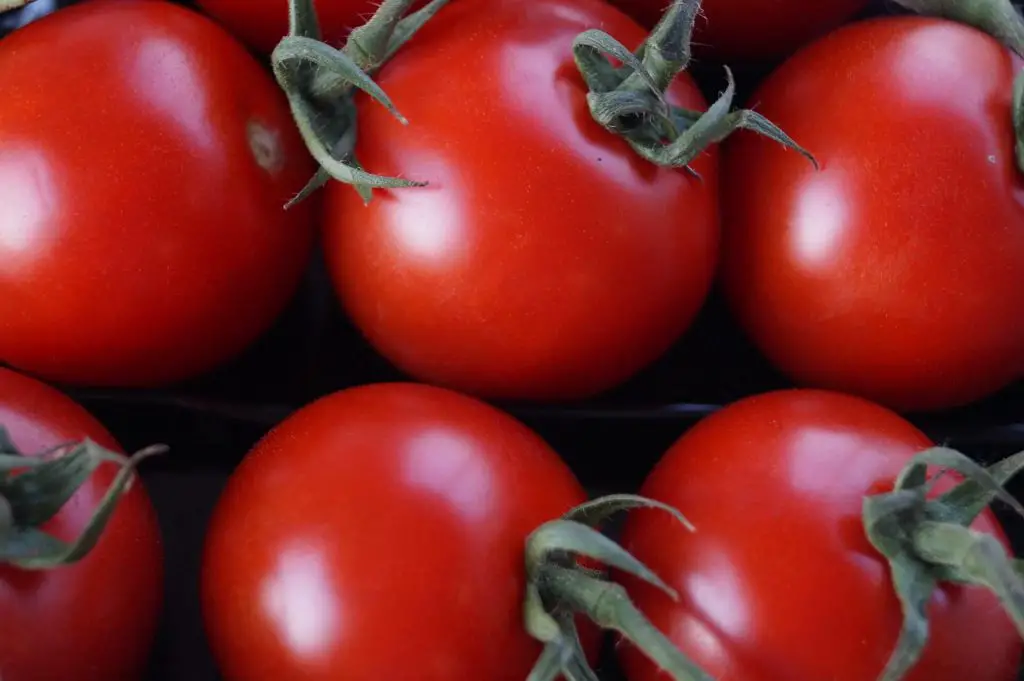
Yes, tomatoes can grow in artificial light. As long as you adhere to their time constraints and color specifications.
What do I mean by time constraints and color specifications?
Tomatoes need at least 8 hours of sunlight a day to thrive, however, when you are growing these fruits indoors, it can get challenging.
Depending on the type of artificial light used, you will need to ensure that the color emitted by these lights at the exposure your plant gets is enough for the plant to grow.
An artificial light source like a compact fluorescent light (CFL) can be a great help in the growth of your tomatoes if you have been wondering how to grow tomatoes with grow lights indoors.
In addition to having longer lifespans, CFLs are available in a number of light-spectrum hues so you may give your plants the exact amount of light they require.
Standard CFLs aid in the growth of your indoor tomatoes, but utilizing grow lights or CFLs made for plants can be advantageous.
You can set CFLs nearer to your tomatoes than you would if you were using incandescent lamps because heat is not a big problem.
It is advisable to keep the light source at least 6 inches above the plants since every leaf must be illuminated for the plant to benefit from it.
For indoor seedling growth, 4 inches should be adequate.
The tomatoes indoors do not receive as much direct light as the tomatoes out in the garden, which benefit from long hours of sunlight.
That doesn’t imply you have to keep your CFLs on all day to provide the plants ample light, just as in the outdoors, plants benefit from a little period of rest.
For seedlings and older plants, aim for 16 hours of direct light every day, including bright sunlight.
In other words, if your tomatoes receive 2 hours of direct sunlight per day, add an additional 14 hours of CFL lighting. You can make sure the tomatoes receive the proper amount of light by setting a timer.
Best Light For Growing Tomatoes Indoors
- Compact fluorescent light (CFL)
- High-intensity discharge lights (HID)
- LED
Lights about 6500K are best for revitalizing leaves and tendrils but are less effective for blossoming or fruit production.
Warm lighting, or roughly 2700K, will, however, promote flowering and fruit production but with little foliage development.
There are several distinct types of grow lights, each with unique advantages.
1. Compact Fluorescent Light (CFL)
You will get a lower harvest of tomatoes because most cfls would not emit full spectrum light enough through tomato plants.
Here are some suggestions:
2. High-Intensity Discharge Lights (HID)
There are two types of HID lamps:
- High-Pressure Sodium (HPS)
- Metal Halide (MH)
Both must be used at various times of a plant’s life cycle.
These lights need special rigging and fixtures since they are so strong.
With this type of grow light, your expenses are increased by the necessity for more frequent HID bulb replacements.
Here are some suggestions:
3. LED Lights
Full-spectrum LED grow lights are your best choice since they do not emit the high surface temperatures that other lights do, making them more cost-effective long-term because they consume less electricity.
Aside from saving electricity, the richer light wavelengths produced by full spectrum LED lights will result in higher tomato yields per plant.
Here are some suggestions:
Is Big Space Necessary To Grow Tomato Plants Indoors With An Led Panel?
No, you do not need a big space.
However, you must take into account the fact that tomato plants, especially those grown from seeds to fruit production, will be tall if you choose indeterminate kinds.
When it comes to growing tomatoes with led lights, the LED panel or light must dangle above them and be adjustable as the plant grows. Therefore, allow for a small amount of headroom over your new growth space.
LED lights are great for more than one reason.
One is that they don’t generate a lot of heat. However, if your fruit, flowers, or leaves do come very close to the panel or even touch it, it could get damaged.
Most LED panels come equipped with everything needed to hook them up so they may be adjusted in height. This is crucial, and it needs to be watched carefully if you want your tomatoes to be robust and healthy.
When starting a garden from seed, a high-quality LED panel will also have a dimmer switch or dial.
It is advised that you set the intensity as follows based on a 100w Full Spectrum LED panel with a dimmer control.
How Much Light Do I Need To Grow Tomatoes Indoors?
Tomato plants need between 12 and 15 hours of tomato grow light hours per day to thrive.
It is necessary to give your new plant adequate light so it may receive the energy it needs to produce fruit and develop into a big, powerful plant.
Equally vital is giving your tomato plant enough shade.
It’s crucial to have a lighting schedule, and any source of indoor lights you buy should be timed to provide the plant a cycle of day and night.
The plant will have enough time during the night cycle to effectively absorb carbon dioxide, which it will utilize during photosynthesis. This repetitive cycle of night and day will result in a sturdy plant and increased fruit production.
What Is The Color Of Grow Light Should I Use For Tomatoes?
A brightness of about 7000 lumens is suitable to grow tomatoes indoors.All types of tomatoes require a variety of lighting hues to develop well.
The growth of tomatoes requires both warm and cool, red and blue lights. Early germination phases benefit the most from cooler light, whilst fruit development benefits from the red light.
This might bring you to the next question.
How many lumens to grow tomatoes indoors?
A brightness of about 7000 lumens is suitable to grow tomatoes indoors.
For optimum tomato growth, more than 9 hours of direct sunshine are required.
The plant’s brightness and color will have an impact on both what it absorbs and the temperature at which it survives and develops.
How To Grow Tomatoes Indoors With Led Lights?
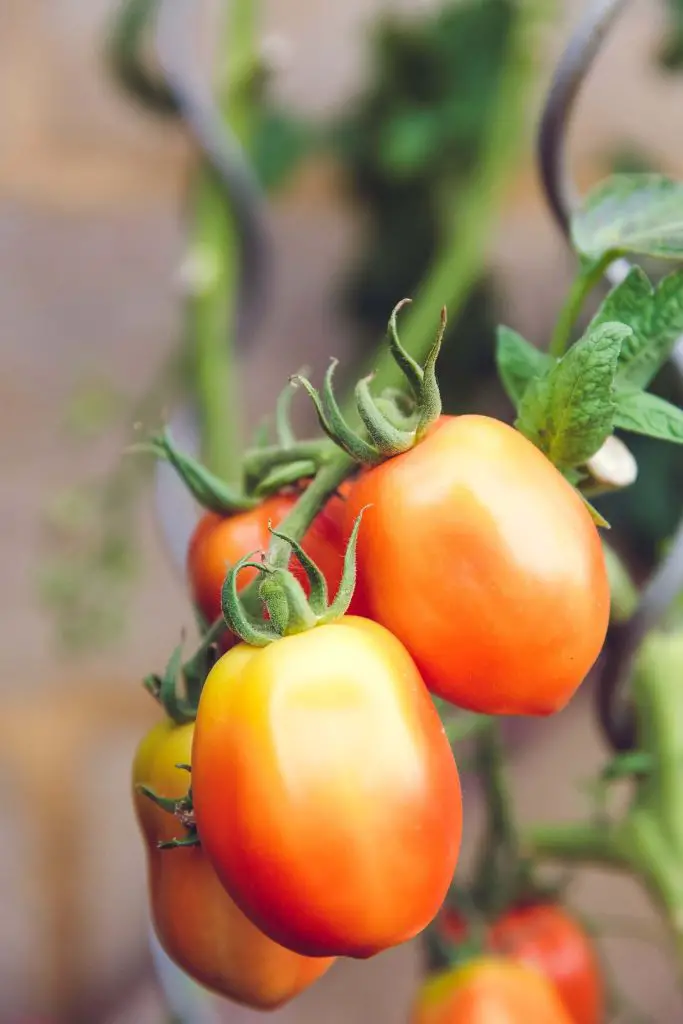
Since you can completely adapt your lighting requirements with LED lights, you can grow vegetables indoors throughout the year.
LED lights are the industry standard for indoor grow lights.
They use less energy while increasing tomato fruit yield and quality. Since they can be customized so much, LEDs can improve tomato fruit productivity and quality. The UV, white, blue, and red light mixture replicates the sunshine that tomato plants require.
LED lights will impact the temperature of your tomatoes, which will need constant monitoring.
The proper temperature is just as important to crop health as protection from heat harm from the sun.
Tomatoes can suffer damage from temperatures as low as 50 degrees Fahrenheit or as high as 90 degrees Fahrenheit. The ideal temperature for long-term indoor tomato development is around 70 degrees.
Conclusion
There you go! An in-depth article on how to grow tomatoes indoors with light!
Growing tomatoes under led lights will help you to maintain the yield of produce as you would get if you grew tomatoes outdoors but without the risk of pests and the possibility of weather risks.
Growing tomatoes requires consistency and care but it not only yields highly nutritious fruits but also instills a sense of accomplishment and resilience in knowing that if we put our mind to it, we can achieve it.
Hope this article provides a brief and in-depth understanding of how to grow tomatoes indoors with lights and you are off on your way to pick out some suitable lights and start the planting process.












